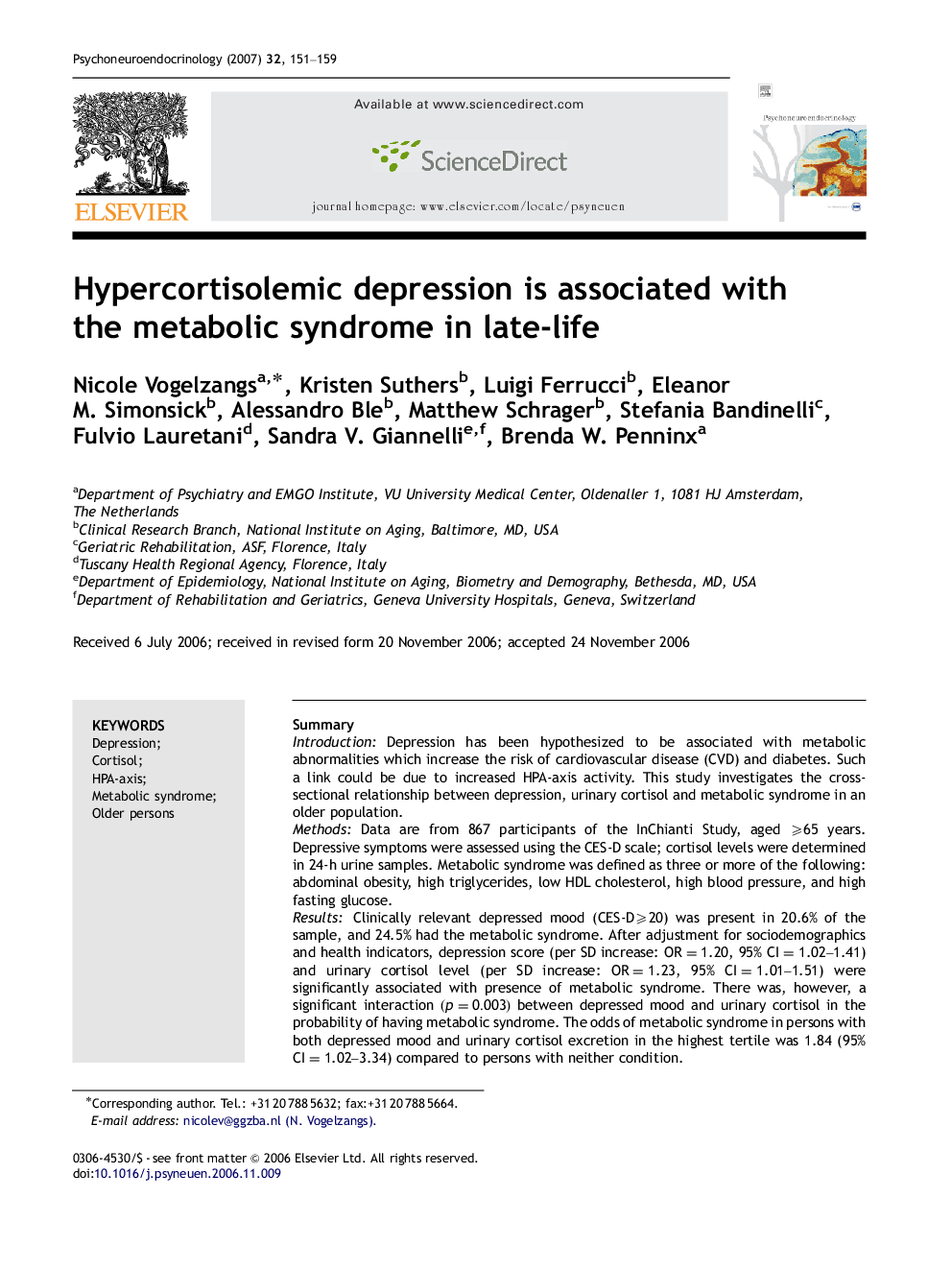| Article ID | Journal | Published Year | Pages | File Type |
|---|---|---|---|---|
| 337199 | Psychoneuroendocrinology | 2007 | 9 Pages |
SummaryIntroductionDepression has been hypothesized to be associated with metabolic abnormalities which increase the risk of cardiovascular disease (CVD) and diabetes. Such a link could be due to increased HPA-axis activity. This study investigates the cross-sectional relationship between depression, urinary cortisol and metabolic syndrome in an older population.MethodsData are from 867 participants of the InChianti Study, aged ⩾65 years. Depressive symptoms were assessed using the CES-D scale; cortisol levels were determined in 24-h urine samples. Metabolic syndrome was defined as three or more of the following: abdominal obesity, high triglycerides, low HDL cholesterol, high blood pressure, and high fasting glucose.ResultsClinically relevant depressed mood (CES-D⩾20) was present in 20.6% of the sample, and 24.5% had the metabolic syndrome. After adjustment for sociodemographics and health indicators, depression score (per SD increase: OR=1.20, 95% CI=1.02–1.41) and urinary cortisol level (per SD increase: OR=1.23, 95% CI=1.01–1.51) were significantly associated with presence of metabolic syndrome. There was, however, a significant interaction (p=0.003)(p=0.003) between depressed mood and urinary cortisol in the probability of having metabolic syndrome. The odds of metabolic syndrome in persons with both depressed mood and urinary cortisol excretion in the highest tertile was 1.84 (95% CI=1.02–3.34) compared to persons with neither condition.DiscussionThis study suggests a synergistic relationship between depression, cortisol and metabolic syndrome. Hypercortisolemic depression may constitute a specific risk group for the metabolic syndrome.
